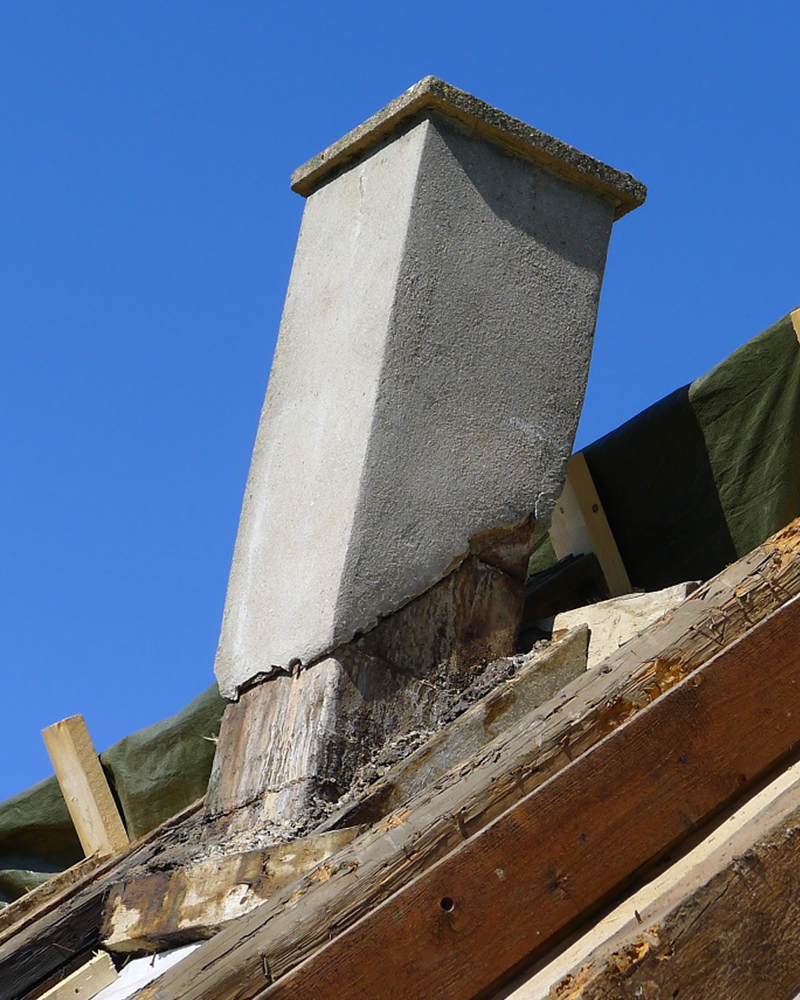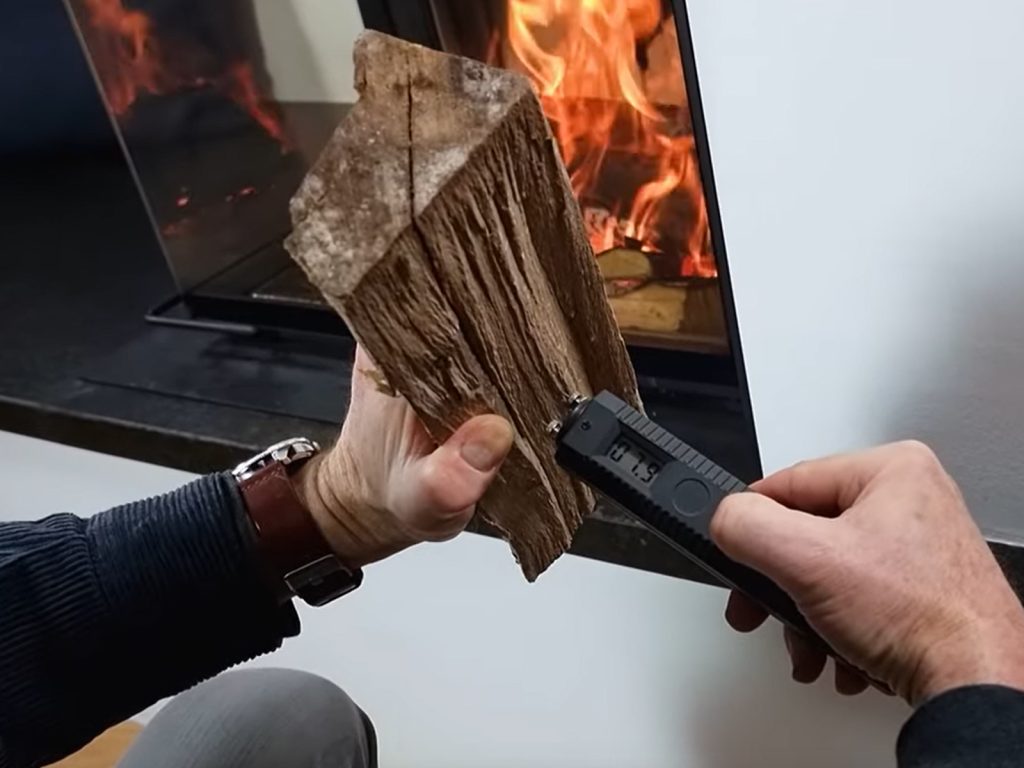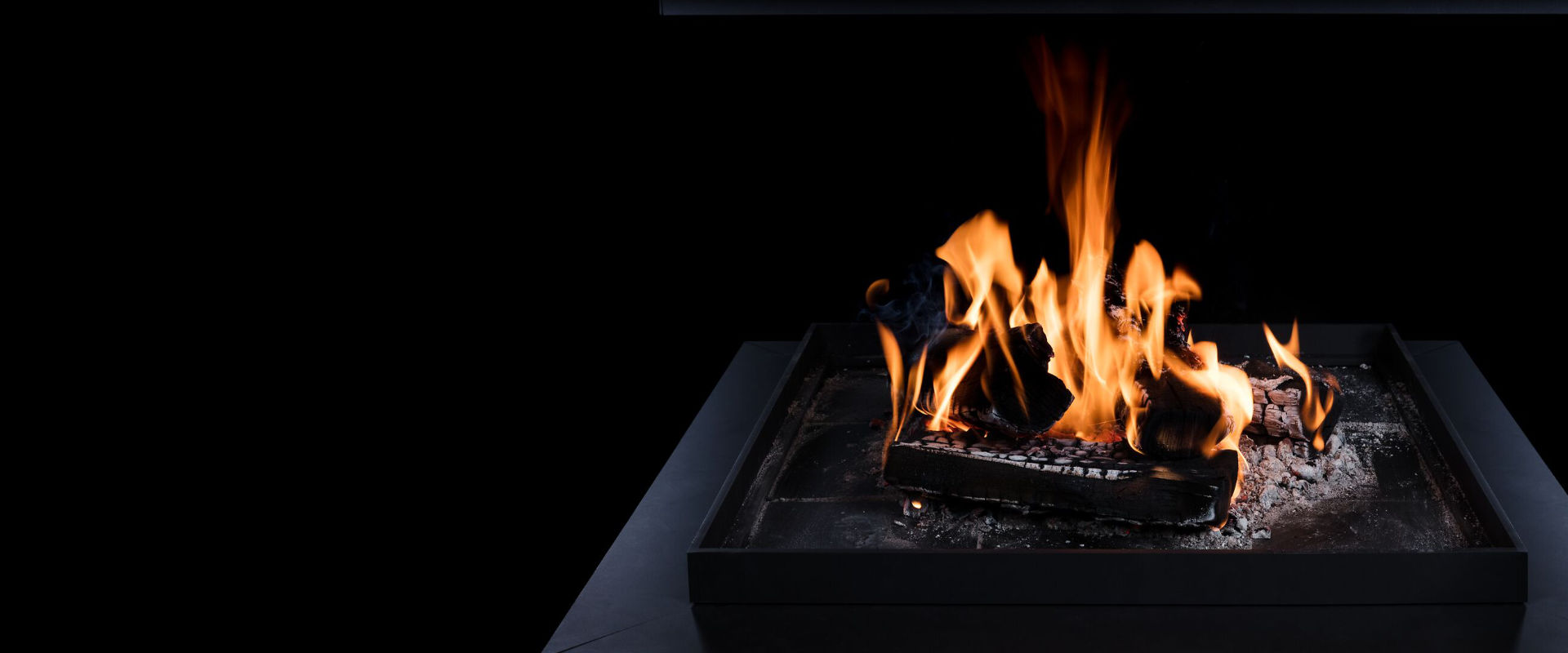What exactly is sooting?
When wood burns, exhaust gases flow into the chimney, where they cool down before being released outside. If these gases start off at too low a temperature – because the temperature in the fireplace was already too low and the stove or fireplace was only smoldering – the gases reach their dew point inside the chimney. They condense and change from a gaseous to a liquid state. The chimney becomes damp, and residues begin to build up. This marks the start of a slow, gradual chimney deterioration that often only becomes visible after years.
Causes: damp wood, low air supply, low temperature
There are many reasons for chimney sooting. Often, it’s due to the continuous use of damp wood. This causes a loss of energy due to the high water content, the flue gas temperature remains too low, and condensation in the chimney increases even further.

Incorrect air supply settings can also be to blame. As mentioned above, this can lead to inefficient combustion or even a smoldering fire, where unburned heating gases settle inside the chimney due to low temperatures.
Structural defects, planning errors, or aging can also cause chimney sooting. For example, if the chimney cross-section is too large, the gases may condense too early.
What helps against sooting
- Use only dry wood; if in doubt, a wood moisture meter can provide assurance.
- Adjust air supply and chimney draft correctly to ensure clean and efficient combustion.
- Have the chimney and flue pipe checked regularly by a chimney sweep.

Conclusion
Chimney sooting is more than just an unpleasant and smelly issue. In the worst case, a renovation or a completely new chimney system can be complex and expensive. The good news is that sooting can be relatively easy to prevent – through proper operation of the fireplace (keyword: air supply), the use of dry fuel, and regular maintenance.
Expert advice
To prevent sooting in the chimney and to get the best heating value from the fuel, it’s important to follow the standard regulations. Optimal and clean combustion ultimately saves real money.





